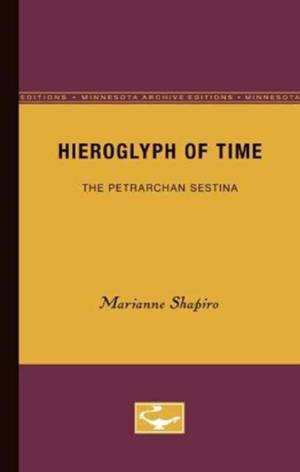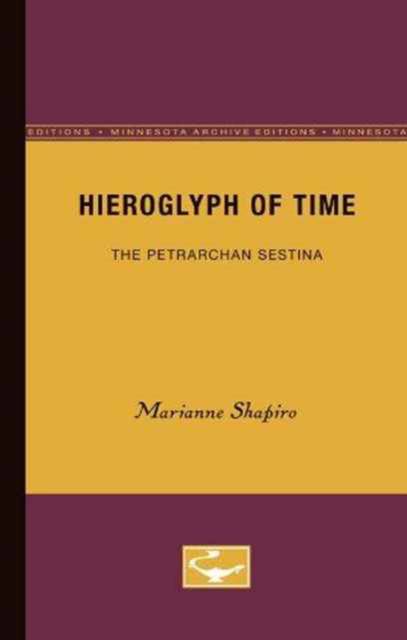
Door een staking bij bpost kan je online bestelling op dit moment iets langer onderweg zijn dan voorzien. Dringend iets nodig? Onze winkels ontvangen jou met open armen!
- Afhalen na 1 uur in een winkel met voorraad
- Gratis thuislevering in België vanaf € 30
- Ruim aanbod met 7 miljoen producten
Door een staking bij bpost kan je online bestelling op dit moment iets langer onderweg zijn dan voorzien. Dringend iets nodig? Onze winkels ontvangen jou met open armen!
- Afhalen na 1 uur in een winkel met voorraad
- Gratis thuislevering in België vanaf € 30
- Ruim aanbod met 7 miljoen producten
Zoeken
Omschrijving
Hieroglyph of Time was first published in 1981."A dance of the intellect among words," Ezra Pound called the sestina. A poetic form invented by a Provençal troubadour, Arnaut Daniel, the sestina was elaborated and refined by Petrarch and is used today exactly as it was created. In Hieroglyph of Time, the first critical study of the sestina, Marianne Shapiro analyzes poems by Daniel, Petrarch, Pontus de Tyard, Sannazaro, Sidney, Spenser, Auden, Pound, Merwin, and Ashbery and discusses sestinas composed in German and Portuguese. In so doing, she traces a strand that links modern to Medieval poetry. Shapiro's methodology demonstrates, furthermore, that it is possible to reconcile the language of structuralism with a historical approach to literary scholarship.Hieroglyph of Time begins with a general introduction to theories of temporality and a chronological discussion of the sestina tradition. The repetition of end words in the sestina makes the form a reflection on time, and the sestina itself, Shapiro argues, is a poignant and searching exploration of temporality. The heart of the book is devoted to an explication of five of Petrarch's sestinas. Shapiro pursues Renaissance imitations of the Petrarchan sestina in the work of Pontus de Tyard, a member of the Pléiade who adapted the sestina in a neoplatonic mode, and of Spenser and Sidney, who made the sestina a pastoral poem. After examining twentieth-century uses of the pastoral, she recapitulates her survey, returning to Italian literature to see how the ship allegory is used by three poets in the Medieval, Renaissance, and modern periods -- Petrarch, Michelangelo, and Ungaretti.
Specificaties
Betrokkenen
- Auteur(s):
- Uitgeverij:
Inhoud
- Aantal bladzijden:
- 272
- Taal:
- Engels
Eigenschappen
- Productcode (EAN):
- 9780816669356
- Verschijningsdatum:
- 13/02/1981
- Uitvoering:
- Paperback
- Formaat:
- Trade paperback (VS)
- Afmetingen:
- 149 mm x 229 mm

Alleen bij Standaard Boekhandel
+ 125 punten op je klantenkaart van Standaard Boekhandel
Beoordelingen
We publiceren alleen reviews die voldoen aan de voorwaarden voor reviews. Bekijk onze voorwaarden voor reviews.











